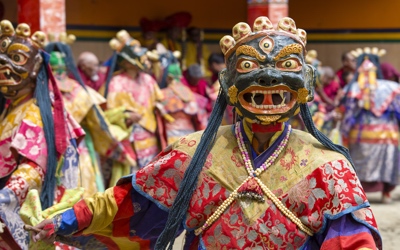
Upper Mustang Trek
18 days
Instant confirmation
About this activity
The Upper Mustang trek brings you into the hidden world of the old Buddhist kingdom of Mustang, also called Lo. Lo used to be part of the Tibetan empire and is therefore closely tied to Tibet in culture, language and geography.
The regions isolation from the outside world has contributed to a highly preserved Tibetan culture and unspoiled nature. Mustang lies in the rain shadow of the Dhaulagiri massif creating a ruggedly arid land surrounded by rocks in all kind of colors .
Points of interest in Lo Manthang are the royal palace, a few beautiful monasteries like the Thugchen Gompa built in the 15th century. Or visit the amchi museum and amchi school. An amchi is a traditional Tibetan doctor. There are 2 amchis living in Lo Mangtang, which are also the official doctors of the king. They founded a school to preserve this ancient wisdom. For an excursion outside the city you can hire Tibetan ponies for a ride to Chhoser where you can visit a small monastery and a century old cave dwelling situated high in the rocks.
The most convenient way to get to Upper Mustang is to fly from Pokhara to Jomsom and start the trek from there. The flight is an adventure in itself flying through the deepest gorge in the world, the Kali Gandaki, which runs between the Dhaulagiri and the Nilgiri mountains. You follow the famous Kali Gandaki River upstream, partly walking in the river bed itself, to Kagbeni. From Kagbeni the restricted area of Upper Mustang starts. However, it is worthwhile to pay a visit to the famous pilgrim destination of Muktinath before heading north into Upper Mustang.
From Kagbeni the trek goes norhtwards and leads to Lo Manthang in 4 to 5 days. You cross pass after pass, which are all between 3,500 and 4,000 m. You can return partly by a different way via Dhakmar, crossing 2 passes of around 4,200 m. Close to Dhakmar you can find the oldest Tibetan monastery in the world, the Lo Gekar Monastery. Lo Gekar Monastery was built in the 8th century by the famous Tibetan magician Guru Rinpoche. It is said that he killed a powerful demon and the blood of the demon has painted the rocks around Dhakmar bright red.
Upper Mustang is a restricted area and up till 1992 it was forbidden for foreign visitors to enter the kingdom. Nowadays foreigners are welcome to Upper Mustang for a permit fee of US$ 500 (to be arranged through a trekking agency and valid for 10 days, each additional day costs US$ 50).
Trekking in Mustang is a great option during the monsoon months (June-August) as the region is in the rain shadow. However, it is best to add a day or two on each side of your itinerary for travel interruptions due to bad weather in the lowlands.
Read more
Show less
The regions isolation from the outside world has contributed to a highly preserved Tibetan culture and unspoiled nature. Mustang lies in the rain shadow of the Dhaulagiri massif creating a ruggedly arid land surrounded by rocks in all kind of colors .
Points of interest in Lo Manthang are the royal palace, a few beautiful monasteries like the Thugchen Gompa built in the 15th century. Or visit the amchi museum and amchi school. An amchi is a traditional Tibetan doctor. There are 2 amchis living in Lo Mangtang, which are also the official doctors of the king. They founded a school to preserve this ancient wisdom. For an excursion outside the city you can hire Tibetan ponies for a ride to Chhoser where you can visit a small monastery and a century old cave dwelling situated high in the rocks.
The most convenient way to get to Upper Mustang is to fly from Pokhara to Jomsom and start the trek from there. The flight is an adventure in itself flying through the deepest gorge in the world, the Kali Gandaki, which runs between the Dhaulagiri and the Nilgiri mountains. You follow the famous Kali Gandaki River upstream, partly walking in the river bed itself, to Kagbeni. From Kagbeni the restricted area of Upper Mustang starts. However, it is worthwhile to pay a visit to the famous pilgrim destination of Muktinath before heading north into Upper Mustang.
From Kagbeni the trek goes norhtwards and leads to Lo Manthang in 4 to 5 days. You cross pass after pass, which are all between 3,500 and 4,000 m. You can return partly by a different way via Dhakmar, crossing 2 passes of around 4,200 m. Close to Dhakmar you can find the oldest Tibetan monastery in the world, the Lo Gekar Monastery. Lo Gekar Monastery was built in the 8th century by the famous Tibetan magician Guru Rinpoche. It is said that he killed a powerful demon and the blood of the demon has painted the rocks around Dhakmar bright red.
Upper Mustang is a restricted area and up till 1992 it was forbidden for foreign visitors to enter the kingdom. Nowadays foreigners are welcome to Upper Mustang for a permit fee of US$ 500 (to be arranged through a trekking agency and valid for 10 days, each additional day costs US$ 50).
Trekking in Mustang is a great option during the monsoon months (June-August) as the region is in the rain shadow. However, it is best to add a day or two on each side of your itinerary for travel interruptions due to bad weather in the lowlands.
Included
- Airport - hotel -airport picks up and drops by private vehicle in Kathmandu.
- Three Star Category hotel in Kathmandu and Pokhara on Twin Sharing Basis on BB Plan
- Teahouse/Lode Accommodation including Breakfast, lunch and dinner) during trekking period.
- An experienced Government license holder guide.
- Trekking porter /Sherpa to carry your bags during the trekking 2:1, max 15 KG baggage/porter.
- Food, drinks, accommodation, insurance, salary, equipments, transportation, local tax for Guide and porters.
- Ground transportation by Tourist coach from Kathmandu to Pokhara -Kathmandu.
- Private vehicle from Nayapul to Pokhara after trekking.
- first aid kit
- TIMS (Trekkers' Information Management System)
- All government taxes and our service charges.
- Farewell Dinner before departure.
Not included
- Lunch and Dinner in Kathmandu and Pokhara.
- Your Travel insurance.
- International airfare and airport departure tax.
- Nepal entry visa fee.
- Tips for trekking staff and driver. (Tipping is expected but not mandatory)
- All kind drinks (hot, cold and alcoholic)
- Personal shopping and laundry etc.
- Personal trekking Equipments.
Additional
- Confirmation will be received at time of booking
- Not wheelchair accessible
- Day 01 : Kathmandu Arrival
- One of the Representative from Himalayan Sanctuary will be waiting you outside the international arrival terminal gate holding your name and transfer to hotel .
- Day 02 : Sightseeing in Kathmandu and Trek Preparation.
- Today after breakfast you will start a tour to several of the most historical and spiritual attractions in Kathmandu. Some of these landmarks are considered World Heritage Sites; including the historic Patan Darbar Squire , the sacred Hindu temple of Pashupatinath, the famous 'Monkey Temple' (Swoyambhunath) and Buddhists shrine Bouddhanath the large Stupa within the world.
- Day 03 : Drive to Pokhara
- After Breakfast in the mornin at around 6:30 Our Guide Assist you to transfer from Hotel to Tourist Bus Departure place .Takes you about 6 hours to get Pokhara
- Day 04 : Flight to Jomsom and Trek to Kagbeni
- Our guide transfer Pokhara Airport to fly for Jomsom. This scenic adventurous flight takes about 20-25 minutes passing through the world’s deepest George presenting spectacular mountain views of Mt. Dhaulagiri, Annapurna Ranges and Fishtail with several famous peaks within the Annapurna and Dhaulagiri area from its both sides. The airstrip is in Jomsom, the main village in the Kali Gandaki valley. Jomsom is the beginning point of our trek. After landing here we start our trek toward Kagbeni which takes about 3-4 hours walk. Kagbeni is also the check point for entrance to restricted Upper Mustang Trekking. We can enjoy the majestic view of Mt. Dhaulagiri, Nilgiri and Tukuche peak while walking the trail in the opposite direction. Your overnight accommodation is set here in tea house/Lodge.
- Day 05 : Trek from Kagbeni to Chaile
- After the formalities of showing your restricted area trekking permit in Kagbeni we start our trekking early because in Mustang there is heavy wind which gets up later in the day, blowing dust and sand around. In the route we can see Nilgiri glowing orange in the first rays of the sun. We take the western route, following the east bank of the river until we reach the end of a broad valley Chuksang, where we cross the Kali Gandaki. After Kagbeni, the trail climbs up, giving us a good view of the village, the valley and Nilgiri. At first the path follows the river closely and later it leads eastwards to flat, dry, desert-like land. Here the scenery is amazing and very characteristic of Mustang with red sandstone pillars and rock formations with fantastic forms and colors, formed by thousands of years of erosion. The first main village we reach, Tangbe, has red and whitewashed houses and on the other side of the river from here are caves, perched high in a vertical wall, which were believed as habitations in previous times. Chaile appears as a small white dot at the end of the canyon. The trail towards here descends gradually to the river-bed – this area is well-known for its fossils. The wide valley ends abruptly at a vertical cliff and a bridge crosses the Kali Gandaki, which flows through a natural tunnel in the cliff. The valley narrows further north and a steep trail leads us up to Chaile, which is a small town with good views towards the Himalayan ranges.
- Day 06 : Trekking from Chaile to Shyangboche
- The trail goes through a forest of small trees and green bushes which are able to survive in the narrow gorge because the high vertical walls keep them cool and sufficiently moist. Soon the valley broadens out and we can see walls built in front of caves which are temporary homes for the herders whose animals graze here. Sometimes it is possible to see the rare blue mountain sheep in this area. The walk to Shyangboche can seem never-ending. It is fairly easy, but a constant climb with the destination nowhere in sight, until, finally, a cluster of houses appears.Today’s trek begins with a steep climb as we follow the trail westwards and when we see Ghyakar on the opposite side of a deep canyon the trail turns right, following the gorge. Running high up above the path is gouged out of the rock and descends in an almost sheer drop for more than 100 meters. After about one hour we are on a pass offering a good view towardsthe Kali Gandaki valley and snow-capped peaks in the distance. After Samar we cross a side-valley, descending to its base and crossing over a creek, before we trek all the way up again on the other side. About two hours from Samar is a red painted cave monastery, which looks as if it has been stuck on to the vertical wall. This is Rangchyung chorten, one of the most sacred places in Mustang. The name means ‘the chorten that formed itself’, because inside are two large stalagmites in a chorten-like formation. Two famous Buddhist teachers, Padmasambhava and Atisha stayed in this cave centuries ago. There are prayer flags on the ceiling and pilgrims have left small clay figures inside.
- Day 07 : Trekking from Shyangboche to Ghami.
- A terraced valley with groups of yellowish trees appears and above the village of are two red Gompas. Unlike other villages in Mustang, where the houses are built close together and look fortress-like, Ghelung is spread out wide on a patch of green grass and gives the impression of being a fairly affluent little community. Rising above the village are barren, brown hills and we can see the Nyi La pass straight ahead.
- Day 08 : Trekking from Ghami to Tsarang
- The path descends gradually towards the Ghami La pass and on the way we see a rundown, deserted village downstream. By now the landscape is even more rugged – a deep riverbed has snaked its way down from the red cliffs and immediately ahead are hills which have the outline and colour of enormous sand-dunes. Another broad valley comes in from the left-hand side and in its centre is Ghami, Mustang’s third largest town, which is high above the river and surrounded by fields.Outside Ghami we see what is Mustang’s longest Mani wall – approximately 1000m long and decorated with simple carvings, blending in well with the surrounding scenery. There is also a group of chortens standing in front of the red wall which forms the end of the valley. Again, the architecture here is like an organic extension of nature. According to legend when the famous Guru Rinpoche (Padmasambhava) came to the area and fought and destroyed a demon, its intestines landed at the site where the Mani wall stands, its lungs near the red cliffs behind and its heart at the spot where Mustang’s oldest monastery, Lo Gekar, was built. A steady climb takes us up a 3820m pass, after which a lunar-looking desert stretches to the horizon. There is no sign of vegetation or human life here, only barren hill after barren hill with the same distinctively creepy beauty. The first indication of human presence we see next is the Tsarang chorten – the large red-painted Stupa is in the middle of the landscape and further down the monastery and the palace of Tsarang can be distinguished in the fields. A broad road leads to Tsarang, Mustang’s second town, with around 1000 inhabitants.
- Day 09 : Trekking from Tsarang to Lo Manthang and Explore
- Today’s trekking begins on flat terrain and the view, apart from a chorten and a few caves, is unrelieved barrenness. After crossing a pass and waking through two rocks forming a natural gate we have finally arrived at Lo Manthang.We walk up through pastures studded with juniper, and have the chance to look back at Lo Manthang. Our return route is on the same side of the Kali Gandaki, because the eastern part is even less inhabited, more strenuous for walking and drinking water can be hard to find. Gradually we say goodbye to the Lo Manthang plain (sometimes known as ‘The Plain of Prayers’) and after about two hours there is no sign at all that such a gem of a city is concealed in one of those rocky valleys. In front of us the mass of the Himalayas reappears and we negotiate the highest pass, Lugri La (4200m)
- Day 10 : Lo Manthang Explore
- Day 11 : Trekking from Lo Manthang to Tamar
- Day 12 : Trekking from Tamar to Shyangboche
- With Nilgiri visible again, we walk past more caves on our way south and then there is a gradual hill climb bringing us above Ghami, where we can see the town, the long Mani wall and the pass we climbed five days ago! There are two more passes to cross and splendid views of the Annapurna range. Next we reach Jamyung, at the fork between Ghelung and Shyangboche. We can detour to Ghelung, with two Gompas built above the village and a small but fine monastery. Later we rejoin the regular trekking path to Shyangboche.
- Day 13: Trekking from Shyangboche to Tetang
- After an early start we have a good view of the village of Tetang, which consists of two separate settlements surrounded by high walls and from a distance looks like a large fort. The ascent to a plateau is steep and the trail here can be rather difficult to locate. There is an easy walk over a plain, after which comes about three hours of steep walking uphill, with the narrow trail getting precipitous at times, with loose black gravel. After ascending high in the valley the trail makes a right turn and the pass becomes visible above. At the pass, the mountains seem amazingly close, with Thorung, although the lowest peak, looking particularly impressive, having large glaciers clinging to its steep flanks. Tilicho is covered by snow with indented glaciers, while the summit of Annapurna further back does not actually seem as high as its 8000m +. Even Nilgiri’s almost sheer north face is also covered by glaciers.
- Day 14 : Trekking from Tetang to Muktinath
- It is a moderate walk down to Muktinath, with stunning views of Dhaulagiri and Annapurna. Their summits are only 34km apart, which accounts for the tremendous depth of the Kali Gandaki valley. Getting to Muktinath involves crossing another valley, which takes some time. The sporadic houses start to become more numerous as we get nearer Muktinath. There are 108 springs which have their source in or around Muktinath and bathing here is believed to bring good luck. Many people also collect the spring water in bottles to take home to relatives. Also at Muktinath is the legendary flame coming out of a rock, around which a Buddhist temple has been created.
- Infants must sit on laps
- Not recommended for travelers with back problems
- Not recommended for pregnant travelers
- No heart problems or other serious medical conditions
- Day 15 : Trekking from Muktinath to Jomsom
- After Lubra, the trail leads to the Kali Gandaki and we have to leap across the river Panga a couple of times! At the confluence of the two rivers we join the caravan of tourists going to Jomsom.
- Day 16 : Fly from Jomsom to Pokhara .
- We take early morning 20min flight from Jomsom to Pokhara. The day we give you chance for exploring the beautiful valley Pokhara with its Natural and cultural beauty.
- Day 17 : Tourist Bus from Pokhara to Kathmandu
- After having breakfast your trip starts to drive back from Pokhara to Katmandu by tourist Coach about 6 hours driving. At evening Himalayan Sanctuary Advennture Private Limited invites you to join in a fare well dinner in a typical Nepalese cultural restaurant.
- Day 18 : Final Departure.
- our representative will take you to the International Airport approximately 2-3 hours before your scheduled flight
- Travelers should have a moderate physical fitness level
- This is a private tour/activity. Only your group will participate
Features
Tourism
70%
Sport
45%
Cultural
30%
Food
15%
You may also like









 See all 37 Collections
See all 37 Collections
Click to discover other experiences
See all
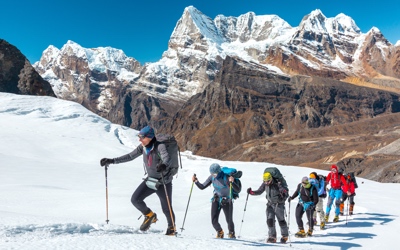
Collections
Hiking
82 Activities
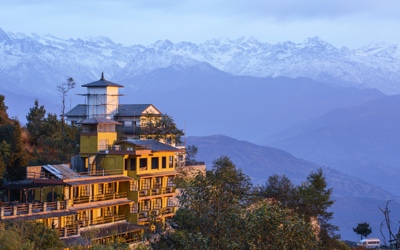
Collections
Nagarkot Trek
73 Activities

Collections
Food & Cooking
16 Activities
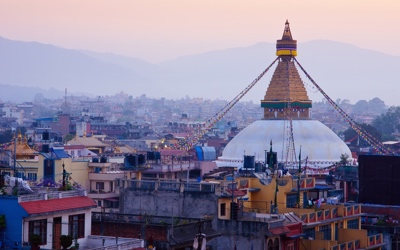
Collections
Kathmandu Valley
65 Activities

Collections
Sightseeing
58 Activities
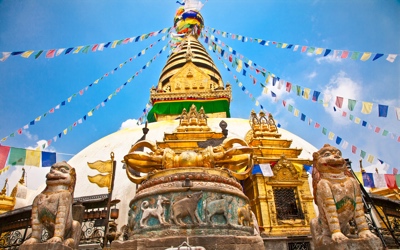
Collections
Temples Tour
22 Activities
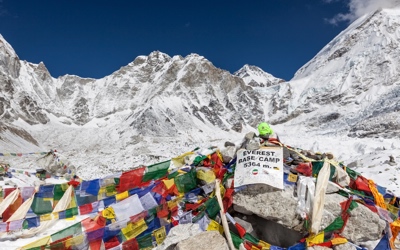
Collections
Everest Base Camp Trek
151 Activities

Collections
Bhaktapur
39 Activities
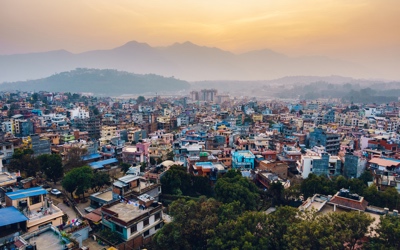
Collections
Other trips
96 Activities

Collections
Patan Durbar
25 Activities

